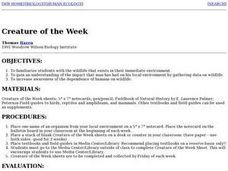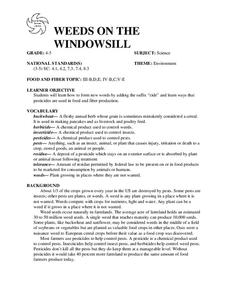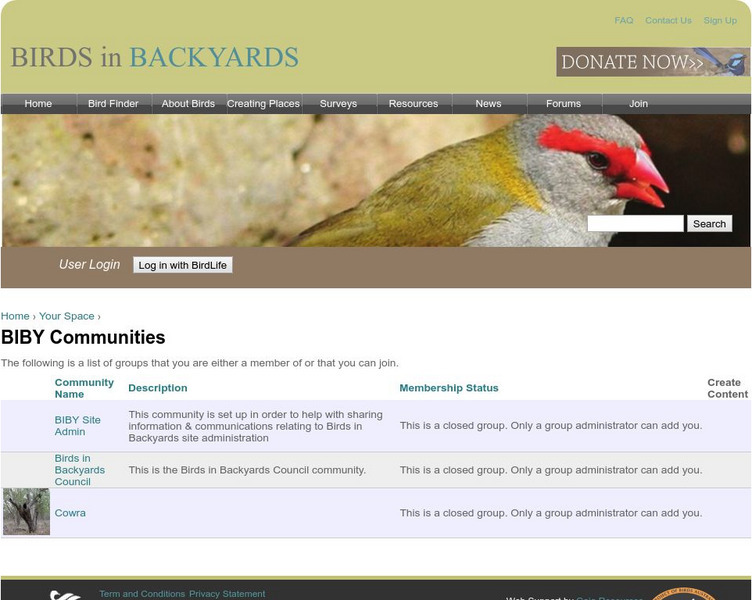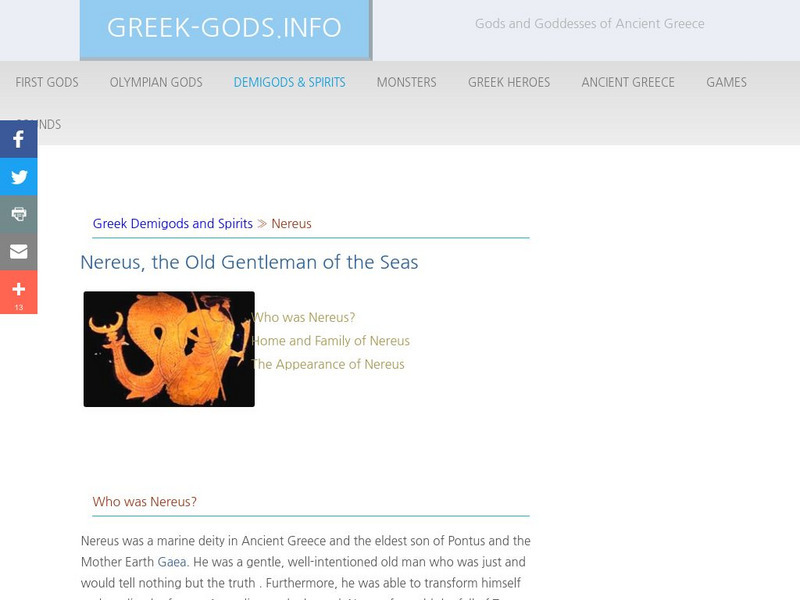Curated OER
Lesson 2: Mapping With Words
Students demonstrate an understanding of the personal relationship that Wabanaki peoples had with the land by analyzing selected Wabanaki place names. They practice map-reading and map-making skills.
Curated OER
Yin And Yang
Students examine the symbols of change, Heaven and Earth, as expressed in
Chinese art and literature in this High School instructional activity. Evaluation is accomplished through a short, small-group research project.
Curated OER
Soil Research
Third graders work together in groups to discover the importance of soils. Using a worksheet, they answer questions as they surf the internet. They observe three different types of soils and record their observations and use the internet...
Curated OER
Catch As Catch Can
Students capture and observe insects. Using provided netting, students design and create a butterfly net. They study many types of insects and their benefits. After identifying insects caught, students complete a graph. Students write...
Curated OER
Creature of the Week
Students explore the habits and biology of the wildlife that resides in their area. They fill in a Creature of the Week sheet for a different animal each week using field guides and textbooks.
Curated OER
Travel Brochures
Third graders divide into teams and select a country to research. They read and review "Notetaking Skills" and begin their research. Next, they work together and share the information they have located. Each team fills in a template with...
Curated OER
Designing Our Own Inventions
Third graders use research from a previous lesson to design their own inventions. In groups, they brainstorm a product they would like to see built and share them with the class. They must explain how each one would serve a purpose or...
Curated OER
Why Here? Why Not There?
Middle schoolers analyze a map and graph information on eleven countries. Using the characteristics of the countries, they determine if they should host the summer or winter Olympic games. After viewing a video, they locate the...
Curated OER
The Right Tool for the Job: Diagnosis Spectrum
Students watch a section of a medical TV show and individually make a written recommendation of appropriate imaging techniques to be used and explain why they chose these techniques. They participate in a discussion revealing their...
Curated OER
WEEDS ON THE WINDOWSILL
Discuss the suffix "cide." Have students name words having this suffix (homicide, suicide, genocide). Ask students what all these words have in common. Then ask students to define the word "pesticide." (Pesticides control organisms that...
Curated OER
Breaking Down Prejudice
Students examine the clauses in the South African constitution. Using the internet, they identify the roles of the government, citizens and identifying discrimination that still exists in the country. To end the lesson, they are given...
National First Ladies' Library
Leeches and Spiders and Toads, Oh, My! The Emergence of Modern Medicine
Students explore the basic ideas and beliefs about medicine in the 18th and 19th centuries. They write a news account to be published in a "medical journal" developed by the class. Each "article" in the journal should be dated...
Curated OER
A Sense of West Virginia
Students consider their perceptions of the world through their 5 senses while visiting the West Virginia State Museum. In this West Virginia history instructional activity, students discover how knowing about the past helps with their...
Curated OER
Catch as Catch Can
Pupils investigate insects. In this insect analysis lesson plan, students catch insects using nets they make. They identify the insects they catch and create a chart to show the numbers and varieties. This lesson plan includes a...
Edutopia
Edutopia: Goods and Services [Pdf]
A unit that teaches the difference between goods and services, the difference between producers and consumers, the difference between human, natural, and capital resources, and the difference between bartering/trading and buying/selling....
Natural History Museum
Natural History Museum: Eukaryotes in Extreme Environments
Extremophiles thrive in the most extreme environments that are inhospitable for humans. This resource breaks down each type and provides a brief description. A good list of references is provided at the bottom of the page.
University of Florida
Florida Museum of Natural History: How to Avoid Shark Attacks
All you ever want to know to avoid being attacked by a shark. Full of lots of good safety tips and information.
Other
Birds in Backyards: Communities
This resource explains how your community can provide a good habitat for birds. Read and learn what type of habitat a bird likes and how even urban areas can be good places for birds.
Marxists Internet Archive
Marxists.org: "Existence and Being" by Martin Heidegger
One of Heidegger's works that is "easier" to read. Does require some background information, but a good way to introduce one's self to Heidegger and his peculiar writing style.
Canadian Museum of Nature
Canadian Museum of Nature: North American Beaver
The North American beaver has survived despite centuries of trapping for their valued pelts. Beavers are marvelous engineers who, the author says, are 'second only to humans in the magnitude of change which they can effect on their...
Other
Dr. Saul: Biology in Motion
This interactive site provides animations and activities in several areas of physiology. The images are simple, but clear. The accompanying text provides a good description of the process being shown.
CommonLit
Common Lit: Themes: Morality: Why Do People Do Bad Things?
This is a collection of Grade-Leveled texts (3-12) to address the question Morality: Why do people do bad things? Select a grade level and a collection of on grade-level reading passages on the topic comes up. [Free account registration...
Greek Gods
Greek Gods: Demigods & Spirits: Nereus, a Marine Deity
Learn about Nereus, a truthful and good-natured marine deity, who went from being half fish and half man to fully human and was father to 50 beautiful mermaids, the Nereids.
Federal Reserve Bank
Federal Reserve Bank of St. Louis: Tortilla Factory [Pdf]
This lesson accompanies a story by Gary Paulsen called Tortilla Factory, and teaches students to identify the different types of resources (human, capital, natural, etc.) that go into creating corn tortillas and other products.
















![Edutopia: Goods and Services [Pdf] Activity Edutopia: Goods and Services [Pdf] Activity](https://d15y2dacu3jp90.cloudfront.net/images/attachment_defaults/resource/large/FPO-knovation.png)






